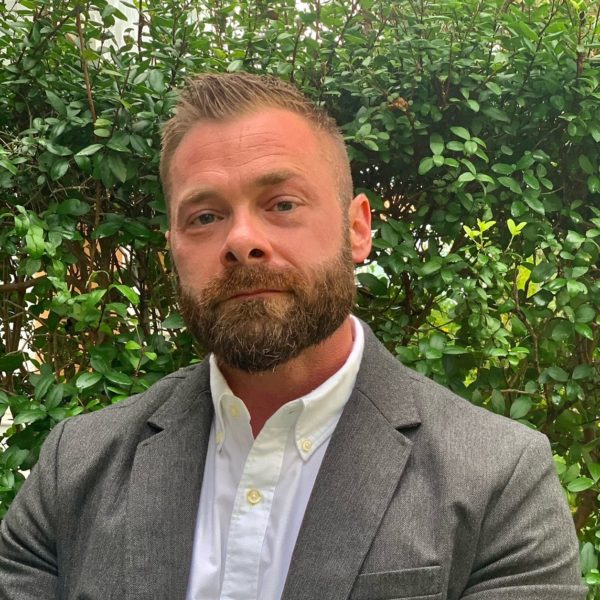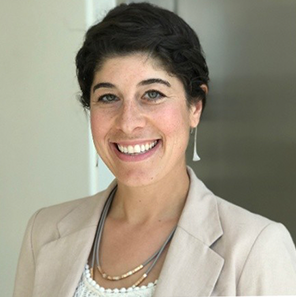Sales Enablement Across Generations: Strategies to Motivate and Retain Sales Reps
3.2K Views | 12 Min Read
“You’re either learning a lot or having a lot of impact, or both,” said Hugo Macedo, VP of marketing and former BDR team lead at Unbabel, reflecting on the main reasons why he was still part of the team.
Leaders are becoming increasingly aware of the importance of creating specific strategies to manage different generations. Especially in sales, reps of different generations are accustomed to different ways of selling; they’re not always looking for the same information or skill training and tend to be motivated by different kinds of incentives.
“It’s a challenge,” said Macedo. “How do you share information with people from different generations?”
Sales enablement is about conveying information and knowledge — whether the goal is to train people, refresh information, or align teams. To do this successfully, sales enablement practitioners have to come to terms with the fact that we might have up to five generations coexisting together in the workplace, with various needs and reasons to stay, but with a common goal that holds them together: driving revenue.
Enabling the Enablers
Much like salespeople need to study buyers to tailor each interaction to them, sales enablement also needs to adapt to their audience. Luckily, there’s extensive research on generational differences – and based on some of that research, the team at Unbabel decided to focus on three main trends to better engage the multiple generations that make up its salesforce.
Communication & Feedback
Macedo manages different generations in different ways. More experienced employees tend to value independence, so he ensures he aligns on why they’re doing something, works with them to define what they’re doing, but always gives them complete freedom to define how they’ll get there.
“I drive the why, we share the what, and they deliver the how,“ said Macedo.
On the contrary, with more junior salespeople he typically focuses on the operational level: the delivery. His role changes to act as a guide, to steer them in the right direction. And sales enablement has direct influence in this vein.
For example, consider establishing office hours where individuals can book 30 minutes to get directive or ask questions. This allows the less seasoned reps to get the support they need on an individual basis without taking time away from more seasoned reps.
When it comes to feedback, Millennials and Gen Z employees expect it on a consistent, recurring basis. About half of them state the need for these conversations to occur weekly, as is the case of Rita Silva, a 23-year-old sales enablement intern.
“It’s my manager’s job to see what I’m doing, and if I’m doing things well,” said Silva. “If they don’t provide any feedback, I don’t think they have the right to come and penalize me. It’s important to know that you’re on the right track and not wasting your time.”
Macedo has had the same experience when working with newer generations; they are very eager to learn and grow with their manager’s feedback. Meanwhile, employees from other generations don’t typically need, or want, that feedback as often. Instead, they assume that managers will let them know if something is wrong or needs adjustment. With this in mind, practitioners should sync regularly with sales managers to understand the generational dynamics in their teams and how they can effectively communicate and coach them.
Of course, it’s only natural for employees to have different preferences and communication styles, which is why it’s always a good bet to use a variety of channels for different types of messages: a mix of internal chat, email, team meetings, 1:1s, and even newsletters. For example, the sales enablement team at Unbabel is responsible for dispatching a “Revenue Newsletter” with updates, key metrics, and announcements. This type of communication not only keeps all teams aligned, but it also helps with key figures for top management to present during Quarterly Business Reviews.
One of the most important pillars for sales enablement is to make sure the teams are equipped with the knowledge they need to do their jobs. Today’s fast-paced environment and availability of information set a very high standard for the pace in which we learn and are expected to acquire new information. Communicating to sales reps in a way that they will best retain the information is key to setting them up for success from day one – and understanding the generational nuances will help enablement teams do this more effectively.
Sources of Motivation
For newer generations, their main sources of motivation are collaborating with others and continuous learning opportunities. Silva shares in the sentiment; she craves the freedom to accomplish her objectives while still having the space to learn and ask for help when she doesn’t know how to approach certain tasks. Macedo has observed similar behavior in his own teams.
“I think the newer members of my team have a very strong growth mindset,” said Macedo. “They want to evolve, they want to learn. And it’s challenging for a manager because they want to learn so much…and we need to feed that.”
As Macedo describes, these junior employees tend to be frustrated when they feel like they’re isolated, or, in Silva’s words, “lonely” when they’re not interacting with other team members. Fortunately, these feelings can be easily addressed through activities and learning experiences facilitated by sales enablement:
- Plan weekly roundtables for knowledge sharing, win/loss analysis, and role-plays, to help the teams share best practices and learn from their peers’ experiences.
- Schedule brainstorming sessions to discuss current team challenges or implement a new process, as they foster cross-functional team alignment and fulfill the need for transparency.
- Manage content for it to be easily accessible. Creating playbooks, linking commonly used content to the CRM at the right stage, or using bots in internal chat tools can help employees find what they’re looking for, whenever they need it.
- Create a sales enablement calendar open to everyone to encourage people to join sessions when they are facing specific challenges, or just to share ideas with other members of the team. The Unbabel calendar is called TUNEs, a combination of: Training sessions and roundtables; Updates & News (weekly meetings updates, internal readiness sessions, company all-hands); and Events the company is attending.
On the contrary, more experienced generations are more motivated by having high levels of responsibility and autonomy to make their own choices. They greatly value independence and opportunities for self-growth.
“It’s all about the challenge,” said Macedo.
For more tenured generations, sales enablement should create programs focused on how they can empower their teams to make an impact. For example, a good method could be to send out assignments that they can put into practice on the job. Give more experienced reps a sense of ownership in training programs for junior reps by asking them to talk on a panel about best practices for a certain scenario or write an article about an experience they’ve had with a customer that has a teachable moment.
“You learn when you try to extract from what’s in your brain,” said Macedo. “When you’re telling someone what you read, when you’re writing an article, you have to organize the information and your thought process. And that’s a huge learning moment because you actually put things into a structure.”
Career Progression
Despite all the differences, across all generations there is a trend toward continuous learning for the sake of professional development, whether it’s to thrive within a constantly changing environment or to get promoted and earn more money.
“I think it comes from the inside, I like to learn new stuff,” said Macedo. “Part of growing is learning. And somehow, I think that humans have this fundamental energy to grow, to progress.”
More and more, newer generations start feeling uncomfortable when there’s no defined road ahead of them, or alternatives to choose from. A lot of people see roles like business development as an entry point to the company and expect to be able to transition internally, if they do well, to other customer-facing roles. Over 40% of Gen Z see learning as a way to get a promotion. However, if there is no promotion or path to follow, it’s very hard to keep them engaged in sales enablement programs and to feel valued within the company.
“If you have a goal, even if it seems very unrealistic, at least it’s something that keeps you going and motivated to learn,” said Silva. “Why would you continue if you aren’t going to get anywhere?”
Working side by side with HR and revenue managers, sales enablement should define what those steps should be and make them visible and actionable. Scorecards are always a good way to start, followed by career paths and competency maps.

Each manager needs to define the goals, objectives, and activities their teams should be making and include those in the company’s HR system for leaders to use as a baseline for feedback during their performance reviews or 1:1s. Use this as a guide to steer the direction of your curricula – after all, sales enablement practitioners should want to solve the biggest roadblocks to the success of the sales team.
Once skills and knowledge are identified for each position, practitioners can develop career path plans that clearly show reps how they can move from one position to the next one, with learning and coaching programs mapped along the way to enhance key competencies.
In the end, sales enablement is all about alignment, communication, and helping salespeople maximize their impact. It’s our job to remove barriers and help people like Macedo thrive and continue growing.
“I’ve been involved in many fast-paced projects throughout the years, so you get used to learning a lot fast and having an impact,” said Macedo. “When suddenly there are all these barriers and you don’t feel like you have an impact anymore, it’s a waste of time. As you start valuing your time more, it’s important to be mindful where you invest it.”
Despite all the nuances between what each generation wants from their job, at the core, they really aren’t that much different. Sure, they have different learning styles and processes, but most times, they’re just looking for a chance to do something that is worth doing, with a team they respect, and with opportunities to learn and grow along the way. And we have to be there to enable them.

















